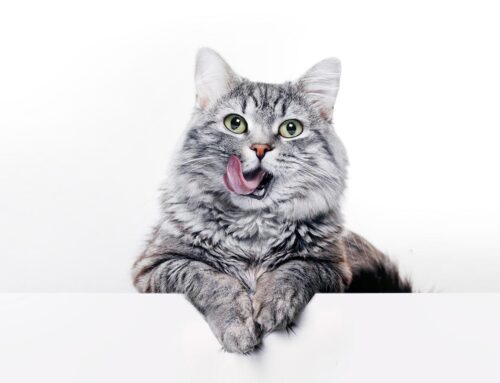PROBLEMS WITH HAIRBALLS
This article is taken from a series we publish in the Lancaster District Magazine
Potentially any animal can be susceptible to hairballs developing in their gut, but cats being fastidious groomers are well renowned for regurgitating hairballs at the most inconvenient time and place.
For those lucky enough to have been groomed personally by their cat will have noted a cat’s tongue is unlike our own. The surface of the cat’s tongue is covered by projections called papillae. In the middle of the tongue, the papillae are large, spiny and point towards the back of the mouth. When your cat grooms their coat, they will naturally ingest a small amount of the fur that they lick.
The amount of hair ingested is actually fairly minimal and is mostly passed naturally in faeces. However, sometimes the hair that remains in the stomach forms a big matted knot, which is what we know as a hairball. Hairballs can be quite rm and hard if they have formed over a long period of time, and can potentially cause a blockage within your cat’s digestive tract or intestine. A hairball in your cat’s vomit will generally be sausage-shaped rather than round, and normally dark in colour.
Most cats will form a hairball at some stage of their lives. Cats that over-groom are particularly at risk of problematic hairballs and long-haired cats are likely to develop hairballs more regularly than short-haired breeds. A problem can potentially develop if your cat has a hairball in their stomach or intestine but is unable to regurgitate it themselves. It is thought that grass eating in cats can be connected to being able to regurgitate hairballs and is actually a good thing and something that your cat simply knows is necessary now and then, so if you nd your cat eating grass and later vomiting, don’t be too distressed!
Problematic hairballs
If you are concerned that your cat has a hairball in their stomach that they are unable to pass naturally, it’s important to seek veterinary help right away. Your vet will perform some diagnostic tests and possibly an x-ray, to discern the presence of a hairball or other mass, and they may opt to remove it surgically or attempt to ease its passage by administering various medications.
Some of the main signs and symptoms of a potentially problematic hairball in your cat include:
- Persistent vomiting, retching or coughing without producing a hairball
- Constipation
- Lack of appetite
- General depression
- Lethargy and unwillingness to move about
- Discomfort in the stomach or abdominal area.
Prevention
Generally, you won’t need to do anything, as most cats manage their own hairballs without a problem. All cats will regurgitate a hairball every now and then, and this is normal. However, if your cat is regurgitating hairballs regularly, appears to be having problems bringing them up or has had previous issues with hairballs that have required veterinary treatment, these preventative measures can minimise the chances of hairballs developing.
Feed a special anti-hairball cat food, which your vet can advise you on. Anti-hairball diets contain a mix of fibres which stimulate normal peristalsis and promote faecal hairball elimination.
Groom your cat’s coat on a daily basis to remove as much loose or shed hair as possible. This is particularly important with long-haired cats and around the changing of the seasons when cats naturally shed more.
Consider using a special hairball treatment or supplement every now and then in consultation with your vet.
Keep an eye open for over grooming and try to identify the potential causes and solutions.


